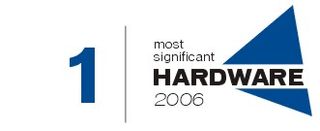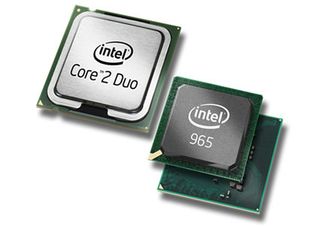TG Daily Top-10: Most significant Hardware of 2006
Intel Core 2 Duo

Wolfgang Gruener
What is it:
Core 2 Duo T5000/7000 series processors, Core 2 Duo E6000/Q6000 series processors for mobile and desktop computers
Why we chose it:
You can imagine that there were heated debates over virtually any product on this list; especially if you come down to the last 15 worthy entrants or so, you wonder if its the better choice to just extend the ranking from 10 to 15 rather than dropping a contestant that deserves to be recognized. For Core 2 Duo, there was never a discussion, and no one on the TG Daily staff really considered a different product on #1 instead.
If you break it down, there was no other hardware technology that had a similar impact on its competitive field or on the hardware industry as a whole. The Core 2 Duo processor propelled Intel from being dead last in performance rankings to a very comfortable lead, it delivered on its promise on power-efficient computing and, probably most important, it restored Intel's credibility. A Core-based microprocessor is the product of choice when you are buying a new notebook or desktop computer today. Period.

The fact that Intel was able to roll out two quad-core CPU based on Core was impressive evidence of the progress the company made in less than twelve months. Effectively, you get twice the performance for (currently) less money than one year ago. Congratulations to Intel for one of the most impressive comebacks we have witnessed in this industry.
So, what about AMD? It's an obvious question many will ask, so let us give answers.
You may have noticed that we excluded the Xeon 5100/5300 series, which is based on the Core 2 Duo, from this recognition. The simple reason is that we believe that, while available as a quad-core-processor, the 5100 does not show the unquestioned lead over AMD's Opteron than the Core 2 Duo over the Athlon 64 X2 and Turion 64 X2 processors. Many buyers of server and workstation processors evaluate processors on a case-by-case scenario and there is credible evidence that, at this time, the Opteron processor remains the better choice in certain scenarios. The Xeon 5100/5300 was a leap ahead for Intel, but the Woodcrest/Clovertown cannot quite distance itself from the Opteron CPU.
Stay on the Cutting Edge
Join the experts who read Tom's Hardware for the inside track on enthusiast PC tech news — and have for over 25 years. We'll send breaking news and in-depth reviews of CPUs, GPUs, AI, maker hardware and more straight to your inbox.
On the desktop, AMD's X2 and FX aren't suddenly bad processors. You can't make much wrong purchasing such a chip; it just isn't the best you can buy anymore. The company recently announced 65 nm versions that claim to consume less power than Core 2 Duos, but they are not available in sufficient numbers and, so far, we haven't received product samples that would have allowed us to verify these claims.
QuadFX, we learned after our Top-10 disappointments article, was a technology many readers would have liked to see as one of the top disappointments. We wouldn't go quite as far and still believe that QuadFX is a very capable technology with lots of potential, but it's time has not arrived yet.
What it means to you:
We are in the midst of a time where the microprocessor is exciting again. Don't get confused: Core 2 Duo is the reason to buy a new PC, not Windows Vista.
Predictions for 2007:
Next year will be less dramatic on Intel's side. You'll see a bunch more quad-cores, but Core-based dual-cores will remain the mainstream choice in desktop computing. The mobile processor will get a refresh with a faster 800 MHz FSB in Q2, which you can basically view as the hardware upgrade that makes Windows Vista much more enjoyable. Intel appears to be on track to introduce the first 45 nm processors with "Penryn" core (the 2nd generation Core architecture) very late in Q4 and we are quite certain that these processors will consume less power, while performing substantially better than the first generation Core. It looks like that especially floating point performances are on the increase.
It's also the year for AMD to catch up on the desktop and mobile platforms. Look for the new dual-core "Kuma" as well as the "Agena"/"AgenaFX" quad-core around mid-2007. Expect these processors to exceed the performance/watt ratio of Core. ATI-technology will be key to completing an upgraded Turion X2 platform with DDR2-800 memory and dynamic graphics switching. Don't be surprised if AMD will unveil a completely new 65 nm mobile processor by the end of 2007.
Article Coverage:
Core 2 Duo launches
First Core 2 Duo T benchmarks
Intel roadmap update November 2006
Intel announces Kentsfield quad-core processor
Slideshows:

Do you agree with these choices? Discuss this article in our forum!
Most Popular

